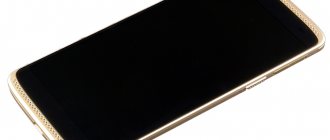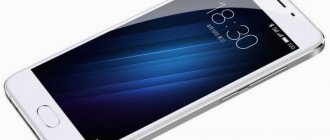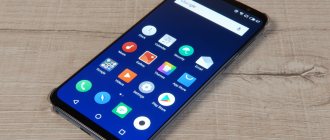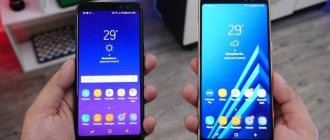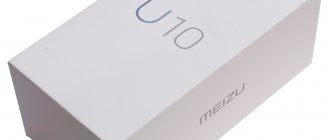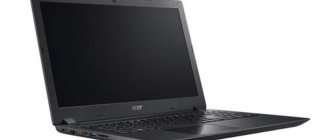In recent years, Meizu has been remembered by users not only for its production of high-quality gadgets, but also large smartphones. The first “shovel” was the MX3 with a 5.1-inch diagonal. Further - more, MX4 conquered the 5.36-inch bar, and MX4 Pro debuted with a 5.5-inch diagonal, and it seemed that the company no longer intended to produce compact smartphones like the prominent sales leader Meizu MX2 with a 4.4-inch diagonal. But the relatively recently introduced new line of smartphones pleased users. The ideological models were the M1 Note devices and its younger brother M1 mini. Unfortunately, in areas outside of Chinese networks, the smartphone simply turned out to be useless due to problems with networks above GSM. But today the picture is changing and the M1 mini is logically evolving into the M2 mini with improvements. Now, against the background of the previous design, a tempting filling and an LTE module operating in the Russian Federation have been added, as well as much more, which you will learn about from the review, including a pleasant surprise at the end of the article for readers.
Main characteristics
- Case materials: plastic, glass (front panel – Asahi Glass)
- Display: IPS, 5.0”-inch diagonal, resolution 1280 x 720 pixels, 296 ppi
- Processor: quad-core MediaTek MT6735, up to 1.3 GHz
- Video chip: Mali-T720
- Operating system: Android 5.0.1, Flyme 4.5*
- RAM: 2 GB
- Storage memory: 16 GB, microSD slot up to 128 GB
- Interfaces: Wi-Fi (ac/a/b/g/n), Bluetooth 4.0, GPS (A-GPS support), Glonass, microUSB 2.0 connector (MHL, USB-OTG), AUX
- Network: GSM/EDGE, UMTS/HSDPA, LTE (TD/FDD-LTE), (Dual SIM support)
- Main camera: 13.0 MP. Ability to shoot video in 720/1080p
- Front camera: 5 MP without autofocus, f/2.0 aperture
- Battery: 2,500 mAh
- Dimensions: 68.9 x 140.1 x 8.7 mm
- Weight: 131 grams
Review of the Meizu M2 mini Android smartphone: when 5 inches is already “mini”
Table of contents
- Introduction
- Specifications
- Packaging and equipment
- Appearance and design
- Display
- Hardware platform and performance
- Software and firmware
- Multimedia
- Wireless Interfaces and Communications
- File system
- Battery life
- Camera
- Comparison with competitors
- Conclusion
- Additional photo examples
Introduction
Meizu continues to conquer the Russian smartphone market, and, unlike its compatriots like Oppo, even during a difficult economic situation, it did not deprive users of the company’s official representative office in the Russian Federation.
While things may still change, this is a good sign for business reputation. As they say, “friends are made in adversity.” Many products from this brand have already been tested in the laboratory, including the interesting but controversial flagship Meizu MX5, the bestseller Meizu M1 Note and its illogical continuation in the form of Meizu M2 Note.
This time our guest is the compact class smartphone Meizu M2 mini. Personally, it would be difficult for me to equip a model with a five-inch screen with a “mini” prefix, but the manufacturer, of course, knows better. Let's see what it can offer in the most popular segment of the market, and let's start, as usual, with the technical characteristics.
Technical characteristics of Meizu M2 mini
announcements and advertising
2080 Super Gigabyte Gaming OC for 60 rubles.
Compeo.ru - the right comp store without any tricks
RTX 2060 becomes cheaper before the arrival of 3xxx
Ryzen 4000
series included in computers already in Citylink
The price of MSI RTX 2070 has collapsed after the announcement of RTX 3xxx
Core i9 10 series is half the price of the same 9 series
The price of memory has been halved in Regard - it’s more expensive everywhere
| Device type | Smartphone |
| Model | Meizu M2 mini |
| CPU | MediaTek MT6735, 4 x 1300 MHz, Cortex-A53 |
| Video processor | Mali-T720 MP3 |
| operating system | Android 5.1, Flyme 4.5 shell |
| RAM, GB | 2 |
| Internal memory, GB | 16 |
| Screen | 5.0″ IPS, HD 1280 x 720 |
| Cameras, Mpix | 13.0 + 5.0 |
| Net | GSM 850/900/1800/1900 |
| Number of SIM cards, pcs. | 1+1 (combination slot) |
| MicroSD support | Eat |
| Data transfer | Wi-Fi, WAP, GPRS, EDGE, HSDPA, 3G, LTE |
| aGPS/GPS/GLONASS/Beidou | Yes/Is/Is/No |
| Battery, mAh | 2 500 |
| Dimensions, mm | 140.0 x 69.0 x 8.7 |
| Weight, g | 131 |
| price, rub. | ~10 000 / ~13 000 |
The characteristics look quite modern, but, as one might guess, there is no talk of an “uncompromising mini-version of the flagship”; this is a regular entry-level device with balanced characteristics.
Of course, we are pleased with the sufficient battery capacity for such a modest single-chip system, as well as support for fourth-generation networks.
Packaging and equipment Meizu M2 mini
Alas, the Meizu smartphone was tested without packaging and a set of accessories, but there is hardly a surprise waiting for us there. Presumably the package will be identical to that of the Meizu M2 Note:
- Documentation;
- Charger;
- MicroUSB cable.
There is no information yet about the availability of a protective film and a stereo headset included with the model for the Russian market.
Appearance and design of Meizu M2 mini
At first glance at the front, the Meizu M2 mini resembles a symbiosis of the iPhone 4/4s on top and not the latest Samsung models on the bottom. I imagine that the designers were faced with the task of creating a “win-win option”.
But on the reverse side, the Meizu style is undeniably visible: the absence of relief on the back cover, the solid design of the plastic panel and wide margins near the lenses.
As we have already seen in previous reviews, the manufacturer loves to be inspired by the style of presenting Apple products, and this is what happened in this case. There are different body colors to choose from: pink, grey, blue and white.
We received a gray version for testing, but it is not quite gray. The paint contains a slightly “cool” sheen, which is very difficult to convey through photography, but owners of well-calibrated monitors will most likely pick up this nuance.
The arrangement of the elements is typical for Meizu: at the bottom there is one mono speaker, a MicroUSB port and a conversational microphone. On top you can find the AUX output.
All hardware keys are located on the right, so using them during a conversation is not very convenient. On the opposite end there is a slot for SIM cards and memory cards.
And this is what the combined slot looks like. It is possible to install either two SIM cards, or one SIM card and a memory card. The positive thing is that LTE will work on both SIM cards.
The tray itself was inserted neatly into the case; no gaps were noticed.
But the hardware keys still have some play, especially the volume button.
What is pleasing is the quality of the plastic processing: there are no seams or painting defects, although the resistance of this paint to damage is an open question.
On the front side we see a standard set of sensors, a front camera and an LED event indicator, which lights up in white and for some reason does not always respond to incoming messages, and there is no built-in utility for setting up the operation of the LED.
There is a hardware Home key, which is not equipped with a fingerprint sensor or backlight. Traditionally, standard touch buttons have been eliminated for Meizu devices, so some applications may experience problems, especially with calling the context menu.
On the reverse side we find a rear camera module equipped with a flash containing one large LED.
Despite the fact that the protective glass is slightly recessed into the body, this hardly protects it from scratches. Even the test sample showed minor scratches.
But the build quality of the lenses was disappointing - a lot of dust got inside, the coating was applied with minor defects. I'm afraid that this may affect the final quality of the pictures.
The lenses of the front camera, on the contrary, are well assembled, and their diameter is respectable.
In general, the build quality is at a very high level, and the structural rigidity is sufficient. However, there were some complaints.
You can often hear that a smartphone becomes slippery when heated when your hands become a little wet, this is especially noticeable on glossy cases. But here the problem is the opposite: the Meizu M2 mini becomes more slippery the drier your hands are. This is the paradox associated with the type of paint.
Packaging and delivery
Meizu M2 Mini comes in the usual packaging format of this manufacturer - its dimensions can be called average for the market. The cardboard from which the box is made has a silky and smooth tactile sensation, looks expensive and pleasant. Its density is significant, which will certainly have a positive effect on the transportation of the gadget.
It is quite difficult to express an unambiguous opinion on packaging design, since perception is always individual and depends on personal preferences. In my opinion, the device deserves a positive response. By focusing on the quality of packaging, the manufacturer rather hints at the low-budget nature of the product.
There is minimal information on the box - just the name of the model on top and a neatly designed sticker on the bottom, which contains all the necessary legal and technical information.
Under the cover is the Meizu M2 mini itself, as well as a clip for removing the SIM tray. Under the smartphone there is a recess with documentation.
Under the lining with the smartphone you will see a modest delivery kit, which consists of a Micro USB cable and a charger. Judging by the molding, it should have included headphones, but, alas, not in the case of official deliveries to the Russian Federation and Europe. Instead of headphones, there is only a plug. However, if desired, the empty space can be supplemented with one of two branded headsets - EP-21HD or EP-20S. From my point of view, the decision to abandon the included headphones will not greatly upset a potential buyer. Price in this case plays an important role, and not everyone will want to overpay for a “weak” headset, as is usually the case. There are no complaints about the quality of the accessories.
Firmware
After preparation, you can proceed to flashing the device’s firmware. Like almost any Android device, the Meizu M2 Mini system software can be reinstalled using several methods. The first method of manipulation presented below will suit almost all users of the device, the second will be useful to owners of copies intended for sale in China, and the third should be used if you want to change the official Flyme OS to a custom solution from third-party developers.
Method 1: Factory Recovery Environment
The simplest and most acceptable way to reinstall, update and roll back the FlymeOS version for owners of the “international” Meizu M2 Mini is to use the “native” recovery pre-installed by the manufacturer in each device. In the example below, the official Android shell Flyme OS version 6.2.0.0G , the latest at the time of creation of the material.
You can download the software package from the link:
- Be sure to charge the M2 Mini's battery to at least 80%. Download the "update.zip" file containing the system software to install and, WITHOUT RENAMING it, place the package in the root of the internal storage. If the device does not boot into Android, proceed to the next step without copying the package.
- Launch Meiza M2 Mini in recovery environment mode. How to get into recovery is described above in the article. If the firmware file was not copied to the phone’s memory earlier, connect the device to the PC’s USB port and transfer “update.zip” to the “Recovery” removable drive, defined in “Explorer”.
- As you can see, on the Meizu factory recovery screen there are only two options - check the checkbox next to “System upgrade”. As for “Clear Data” - the function of clearing the memory of all data before installing the system, it is also recommended to check the box here.
When you roll back a version of Flyme to an earlier version than the one installed on your smartphone, cleaning the partitions is mandatory! When updating, this is done at the request of the user, but, we repeat, it is recommended!
- Click the “Start” button, which will start the procedure of first checking the software file and then installing it. Processes are accompanied by filling progress bars and do not require user intervention.
- Once the files are transferred to the required partitions, the phone will reboot into the recovery environment. Click the "Restart" button.
- The first system startup after installing the system software takes longer than usual. The initialization procedure is characterized by the longest duration, accompanied by the inscription on the screen with a percentage counter - “Application optimization”.
- The completion of the Flyme installation process can be considered the appearance of the shell screen with the choice of interface language. Determine the main parameters of the system.
- The reinstalled and/or updated system can be used!
Additionally. Google services in FlymeOS
The policy of the developers of the proprietary Android shell FlymeOS, which runs Meizu smartphones, does not involve the initial integration of Google services and applications into the firmware. In other words, by completely reinstalling the official Android on the Meizu M2 Mini, the user will find that the usual features are missing after starting the system. However, correcting the situation will not be difficult. Do the following:
- Open the App Store available in FlymeOS and find the Google Apps Installer tool by entering the corresponding query in the search field.
- Install the tool. Upon completion of the installation, the process of downloading and integrating Google services into FlaimOS automatically starts, which will end with a reboot of the smartphone.
- After launch, the operating system becomes equipped with almost all the usual components, and missing applications can always be downloaded from the Play Store.
Method 2: Installing G-firmware on “Chinese” devices
As mentioned above, the abundance of versions of the M2 Mini can serve as some obstacle in the process of installing international firmware containing the Russian language. If the need to reinstall the OS arose on a device with a pre-installed system characterized by an index other than “G,” most likely you will need to first change the hardware identifier.
This manipulation in the example below is performed on a device running firmware 4.5.4.2A; on other assemblies the functionality of the method is not guaranteed!
- Install FlymeOS 4.5.4.2A , following the recommendations from “Method 1” above in the article. The fact that there are hieroglyphs in the description of the recovery options should not be confusing - the meaning of the actions performed as a result of calling the functions is the same as in the example above!
- Download the archive containing everything you need to change the device ID - specialized script, Android applications Kinguser, BETA-SuperSU-v2.49, BusyBox And Terminal.
Download a set of tools to change the ID on Meizu M2 MiniAfter receiving the package, unpack it and place the resulting catalog in the internal memory of Meizu M2 Mini. Copy the “chid.sh” file to the root of the internal file storage.
- Get root rights. You can do this using one of the methods described at the beginning of the article, but the easiest way is to go the following way:
- Install Kinguser.apk and launch the application;
- After the message “Root access is unaviable” appears, click the “TRY TO ROOT” button, wait for the completion of manipulations in the program, accompanied by an increase in the percentage of completion of the process of obtaining privileges, and reboot the smartphone;
- Install the SuperSU root manager by running the file BETA-SuperSU-v2.49.apk from Explorer and then following the installer's instructions.
There is no need to update the binary file, which the manager will require after the first launch, just click “CANCEL” in the request window!
- Install the application BusyBox Installer and run it.
Provide Superuser privileges when prompted, wait for the “Smart Install” component to download, then click “Install” and wait until the device is equipped with console utilities.
- The last tool on the list that you will need to change the MEIZU M2 Mini ID is the “Terminal Emulator”. Run the file “Terminal_1.0.70.apk”, wait until the tool is installed and run it.
- Type the command su in the terminal and then press “Enter” on the virtual keyboard. Grant the program Superuser rights by clicking “Allow” in the request window that appears.
- Run the command with the following syntax: sh /sdcard/chid.sh in the Terminal. You will get the result almost instantly - during the execution of the script commands, console responses confirming the success of the operation appear: “now you have intl phone id = 57851402”, “now you have intl model id = M81H”, “now you have intl id string = international_of”.
- Restart your smartphone. This completes the change of hardware ID for Meizu M2 Mini.
After completing the above steps to change the identifier, the Meizu M2 Mini “turns” into the international model M81H on which you can install firmware with indexes G and I of any version. Installation of the OS is carried out by following the instructions “Method 1: Factory recovery environment” set out above in this material.
Method 3: Custom firmware
In the event that the proprietary Flyme shell does not satisfy the user according to any criteria, modified unofficial versions of the OS come to the rescue, of which quite a large number have been released for the device in question. These solutions completely transform the software appearance of the smartphone, and also allow you to get the 6th and 7th Android on the Meiza M2 Mini.
To install a custom, you will need to complete several steps and a fairly extensive set of tools. All manipulations according to the instructions below are performed on Meiza M2 Mini with FlymeOS 4.5.4.2A . Download the software of this version from the link available in the description of “Method 2” and install this material using “Method 1”, and then proceed to carry out the following, having first studied the instructions from beginning to end and weighed your own strengths and capabilities, as well as fully understanding that will have to do it!
An archive containing all the necessary files and tools is available for download from the link below, download it and unpack it into a separate directory.
All tools and files used in the example below are taken from the folder obtained as a result of unzipping the package “UNLOCK_BOOT.rar”, we will not return to this issue!
Step 1: Unlocking the bootloader
Before it becomes possible to install a modified recovery, and then a firmware different from the official one, you need to unlock the bootloader of the device. To perform the procedure on Meizu M2 Mini, follow the following instructions step by step.
Attention! In the process of unlocking the bootloader, all data contained in the internal memory of the device will be destroyed! A preliminary backup is required!
- Make sure you have ADB drivers on your system. For this:
- Run the file “AdbDriverInstaller.exe”;
Connect the device running Android to the PC and activate “USB Debugging”. Just in case, information: on Flyme 4, the “USB Debugging” mode is activated by following the path: “Settings” - “Accessibility” - “Developer Options”. Next, switch “USB debugging” and confirm your intentions with the “Yes” button in the request window;
- In the “Adb Driver Installer” window, click the “Refresh” button
and make sure that the “Device status” field says “OK”;
- If the status differs from that described above, click the “Install” button and wait for the installation/reinstallation of system components.
- Install the Android ADB Key application by running the file “Adb+key.exe”
and following the installer's instructions.
- Follow steps 2-5 of the instructions “Method 2: Installing G-firmware on “Chinese” devices” outlined above in this material. That is, get root rights, install “SuperSU”, “BusyBox” and “Terminal”.
- Place the file “unlock_bootloader.sh” in the root of the internal memory of MEIZU M2 Mini.
- Launch “Terminal Emulator” on your smartphone and run the su command. Grant the tool root rights.
- Enter the command sh /sdcard/unlock_bootloader.sh into the console and press “Enter” on the virtual keyboard. The result of executing the command should be a terminal response as in the screenshot below (2). If the picture matches, the operation is completed successfully.
- Return to Windows and copy the "ADB_Fastboot" directory to the root of your "C:" drive, then open the resulting folder.
- While holding down the "Shift" key on your keyboard, right-click on a free area of the "ADB_Fastboot" directory. In the context menu that appears, select the “Open command window” option.
- Completing the previous step will bring up the Windows console. Connect the M2 Mini to the USB port, if you disconnected it, and write the adb reboot bootloader command in the console. Confirm execution with the Enter key on your keyboard.
The device will begin to reboot into “Fastboot” mode, as a result of which its screen will turn black, and the inscription “FASTBOOT Mode...” will appear at the bottom in small print.
IMPORTANT! During this and subsequent unlocking steps, do not disconnect the phone from the PC and do not close the command line!
- In the console, write the command fastboot oem unlock and press Enter.
- After executing the command, a warning about the risks of unlocking the bootloader will appear on the device screen. Confirmation of the intention to unlock the bootloader is by pressing the “Volume +” key of the smartphone. Refusal to perform the manipulation – “Volume-”.
- Press the volume up button and wait 5-10 seconds until the mode selection menu appears on the screen. Despite the fact that the bootloader is already unlocked, at this step the smartphone stops responding to key presses. This is a standard situation, hold down the “Power” button until the device turns off.
- Call the factory recovery by simultaneously holding down the “Volume+” and “Power” keys on the device that reboots cyclically as a result of performing the above steps. In the recovery environment, without changing anything, click on the “Start” button. The smartphone will display an error message about a missing system software package. Click "Restart".
- Now Flyme will boot normally, but since a factory reset was performed during the unlocking process, you will have to perform the initial shell setup again, and then re-enable the “USB Debugging” mode to complete the next step towards installing a custom OS in Meiza M2 Mini.
Step 2: Installing a modified recovery
Almost all custom Android shells are installed through a modified recovery. The best solution for most devices today is TeamWin Recovery (TWRP), and for the Meizu M2 Mini there is a perfectly functioning environment build, let’s install it.
- Copy the “recovery.img” file from the “TWRP 3.1.0” folder to the “ADB_Fastboot” directory located in the root of drive C.
- Connect the device with USB Debugging enabled to the PC and launch the command line as described in step 8 of the previous step, which involves unlocking the bootloader. Run the adb reboot bootloader command, which will reboot the device into fastboot mode.
- Write fastboot flash recovery recovery.img in the console and press Enter.
- As a result, TWRP will be almost instantly transferred to the corresponding memory section of the Meizu M2 Mini, and two lines will appear on the latter’s screen as in the photo below. Turn off your phone by holding the Power button for a long time.
- TWRP is installed, to enter the modified recovery environment, the same key combination is used as for the native recovery - “Volume +” and “Power”.
After the first launch of the environment, for convenience, select the Russian-language interface, and then slide the “Allow changes” switch to modify the system partition to the right. Everything is ready for further work with TWRP and installation of unofficial firmware.
Step 3: Installing a custom OS
Once the Meizu M2 Mini bootloader is unlocked and the device is equipped with a modified recovery environment, installing a custom OS and replacing one such solution with any other is a matter of a few minutes. The entire procedure is performed using a generally standard method, which is described in detail in the following material.
Read more: How to flash an Android device via TWRP
As an example, below is demonstrated the installation of one of the most popular custom shells for the M2 Mini, developed by probably Meizu’s main competitor in the Android device market, Xiaomi. The OS is called MIUI and is ported to the device in question by several development teams and individual enthusiast users. In general, almost all options function very well on the device.
Appearance, design features and display
Let me start this section by saying that Meizu apparently did not have the task of producing a new and distinctive design for our model. The Meizu M2 Mini was made in the general style of the company's older devices, besides, it looks like its big brother M2 Note or vice versa, whichever you like best. Many companies are now using similar tactics. But we can’t say that this strategy is wrong for budget models; visually everything is presented with dignity and this is important.
However, unlike the older models of the MX series, the M2 Mini has several bright body colors, namely pink and blue, to which are also added the usual white and gray. The latter is exactly what we have on the test. I recommend taking a closer look at this particular shade; your smartphone looks charismatic in it.
Despite the impressive five-inch display, the smartphone is very compact. The dimensions of Meizu M2 mini are 68.9 x 140.1 x 8.7 mm, weight – 131 g. The margins on the sides of the display are about 3.5 mm. Such indicators and the sloping edges of the case allow it to lie in the hand with great comfort.
Meizu M2 mini is made of plastic, namely polycarbonate. Internal frame for metal components. Well, the front panel, accordingly, is completely covered with tempered glass with an oleophobic coating (Asahi Glass). In your hands, the smartphone looks expensive like a flagship. I can’t call the case easily soiled; it is resistant to any defects, such as scratches, especially if handled well. And even if they appear in small quantities, they will not be noticeable due to the color and texture of the case. The situation is approximately similar with glass. But since soiling is still present and dirt is not very easy to remove from the display, the conclusion suggests itself about the mediocre application of the oleophobic coating.
Returning to the front panel, let's discuss the display in more detail. As I already said, Meizu M2 mini is equipped with a high-quality five-inch IPS matrix - resolution 1280 x 720. Pixel density 269 PPI. Multi-touch supports up to ten simultaneous touches. The manufacturer claims a contrast level of 1000:1 and a maximum brightness of 400 nits. Unfortunately, I was not able to check whether this is true or not. But the overall impressions of the display are quite satisfactory. The picture is quite clear, I like the color rendition. The display cannot be called bright, since at maximum brightness outdoors it is quite difficult to view from the phone, but in the dark the display will definitely not dazzle your eyes.
When examining the gadget in detail, the first thing that attracts attention is the mechanical key in the center, exactly like the older models. However, unlike its MX series brethren, it does not carry a fingerprint scanner. Its functionality is quite wide. When you press the key, you go to the home screen, and when you touch it, you go back. When pressed and held, the display is locked. The button is flat, slightly recessed into the body, made in the shape of a rectangle with rounded corners. There seems to be a metal edging. There are no more keys on the central panel. Looking ahead a little, I’ll say that the multitasking menu opens by swiping up from the bottom edge of the display.
There is a small speaker in the center above the display. Its location is convenient and there are no complaints about the work. The volume reserve of the speaker is quite large. Next to it is a block with a proximity and light sensor. And even further is the peephole of the front camera. An LED event indicator is hidden on top. It hides under glass and does not show itself in any way when not in use. Flashes smoothly white - moonlight. The LED is quite bright and can be seen from any angle when illuminated. There are no complaints about the sensors in my test device.
On the lid, closer to the bottom, there is a logo and a small inscription in English, which informs about the development of the model in China.
But at the top center there is a single flash and a rather large camera eye, which, by the way, does not stick out. Rather, it lacks a small metal edging.
At the bottom center there is a Micro-USB connector, a little to the right is a microphone, and on the left side is a speaker, which is hidden under a perforated strip. There are also several recessed screws that hold the body together. The AUX connector has found its place on top. It was not possible to find an additional microphone in the smartphone; after all, it is middle class. On the right side there is a volume rocker and an on/off key. The buttons, like the body, are plastic. They press with a characteristic click that is pleasant to the ear, do not play, and are located conveniently.
On the left, except for the implied SIM tray, there is nothing else. The phone is “dual SIM”, but in the case of a second SIM card, you will have to make a choice, either a memory card and one SIM card, or only two SIM cards. I will note that in the case of my test copy, the tray somehow did not fit very tightly and was loose. Otherwise, there are no complaints about the assembly, everything is sound. Nothing creaks, does not play, does not press through, the fit of parts is very precise.
Excellent women's smartphone or review of Meizu M2 Mini (18+)
To the competition! A story about how I chose a smartphone for my wife, where I settled on and why I so loudly called the Meizu M2 Mini the best women's smartphone as of March 2020 in my review. Review 18+
In general, reviews of this model over the past year were for a carriage and a small cart, but in 2020 everyone was considering it as a flagship or somewhere in that area. However, progress cannot be stopped and the flagships have moved forward. And my task was somewhat different: I needed to pick up a women’s smartphone. And choosing it, in my opinion, turned out to be very, very successful. It’s worth remembering here that a friend, a couple of weeks before my search, approached me with a similar problem. But it was already clearly aimed at the top model from Xiaomi, the “pro” version with three gigs of RAM, five and a half inches of diagonal and a flagship processor. My friendly advice, like why buy a cool jeep with a jet engine for a lot of money as a city car for a girl, but wouldn’t it be better to choose a peppy hatchback - they didn’t have the desired impact and in a month there will be a review of his choice. In the meantime, I’ll tell you about mine.
A year ago, I wrote about a similar process of choosing a phone for my wife, and as of spring 2020, ULEFONE BE PURE was a good option. But a year passed and Ulefon’s characteristics were no longer lacking. Not critical, but the lack of RAM often made surfing heavy sites somewhat uncomfortable. Somewhere after the New Year, when the battery also began to lose ground, it was decided to change the phone to a more current model. For some time I looked through the current new products, looked for options, showed it to my wife... But often it ended in a fiasco. In the spirit of the phrases, this one is too silvery, this one is too big or too dark. A couple of conversations nevertheless helped to highlight what was needed: 1) a smartphone, because there’s nowhere without it 2) with current performance characteristics 3) 5″ inches 4) white is better or somewhere in similar colors (like be pure was) 5) micro-USB/ event sensor. In a word, it should look good and be easy to use. And not for a million million, obviously. I thought more about the new products, and then decided to look at the situation from a different angle. And this is where 100,500 reviews of Meizu M2 Mini came into place. I read it on 4pda, read the reviews and no longer looked for other models.
Many people know that I review equipment from Chinese stores, and in such a situation you can find some variant of new products for which the store can give a good discount. Here everything is different, the phone is not new and is selling quite well - so no one was going to make much concessions on its order. Moreover, a year has passed and the original inflated price for it has already been forgotten; everywhere it costs almost identical 120-140 bucks.
However, the M2 fit so perfectly into the desired criteria that I had to shell out money and simply buy it at the minimum market price and with a minimal discount.
Delivery and packaging
There were no special surprises here; this is not the first time I’ve bought from Tomtop. A couple of weeks and my order arrived packed in an additional layer of foam.
In this case, a box made of very hard cardboard is not the most necessary option - only a direct blow with a hammer could damage its contents
Control stickers from tomtop, so that nothing goes missing from the kit on the way to me
Well, the main thing is in place - 16 GB white version
The kit is minimalist: 1) charging with a flat plug + cable (but separately in the package there was an adapter for a Euro plug) 2) yes a pin for removing the SIM tray 3) mini-instructions in Chinese
The device itself from the box is covered with all sorts of hint stickers, which, however, were immediately removed and thrown back into the box.
Above the screen there is a proximity sensor on the left, a speaker, an event indicator light and a camera for Skype. Below the screen are on-screen buttons that open running applications and a mechanical multifunction button. A mechanical click on it brings you to the desktop, and a touch touch replaces the “back” key.
About the side buttons and physical parameters. The difference between 5″ and 5.5″ is very appropriate here; while the first option is still acceptable for everyday use, the second would still be too large. Like the example in the case of just M2, and not the mini version. The glossy cover of the M2 Mini does not try to slip out of your hand, so there is no obvious need for a case here; for now it is used without any protection at all.
On the right side there is an unlock button and a sound rocker, and on the left there is only a SIM tray. The back cover does not play anywhere, nothing creaks and only the SIM tray slightly spoils the impression of perfect assembly...
The SIM tray was filmed with Meizu’s own camera in macro format. The solution is so disliked by users, but so popular among manufacturers - you can install either two nano-SIMs, or 1 SIM and a memory card. In my case, the negativity passes by completely and completely; my wife uses 1 SIM card. But here it is worth noting a minor negative, when the white component of the symbol is mercilessly loose and only when inserted into place is fixed as needed. Fortunately, in our case it will rarely be removed.
Due to its size, it performs telephone functions quite well. Again, talking on a 5.5″ phone is still less comfortable than talking on a 5″ phone.
There were some Chinese apps out of the box. Removed with a couple of movements and without leaving a trace
The first thing I looked at when the phone was turned on was the firmware version
There is Russian/Ukrainian, most of the menus are translated correctly, although not without failures - here is the window for setting up the standard weather utility
You can reflash it to newer and better Russified shells, but I looked at the phone, looked at this poll on that very forum... You can put up with small details, especially since the new firmware is also not ideal. And use the phone without additional manipulations, with the firmware version out of the box.
Testing the Meizu M2 Mini phone
I tested important functions in an individual situation and along the way I will explain why I focus on them. Otherwise, we carried out only general information testing
Information testing - Antutu and CPU-Z
They say that Antutu is no longer a cake and I’m even inclined to believe it. Or the Chinese managed to perfectly optimize the system for such speed of the Meizu M2 Mini. Although this is indirectly confirmed by autonomy indicators
What I would like to note separately is the number of sensors. I’m just thinking about buying another case with a magnetic element
Regarding the mentioned autonomy. Meizu M2 Mini has a non-removable back cover and a claimed 2500 mAh battery. By today's standards the capacity is mediocre, but it lasts for a day+, or a economical 2 days. I tested it simply by using it and using a synthetic test, in which the device beat my personal record among devices - I have never seen a figure of 8 hours here.
For those citizens who can argue that 1GB of RAM would be enough for not too demanding tasks on a smartphone - here is a screenshot just from life. More than 1 GB occupied...
I was also pleased with the GPS. Often when traveling, a phone is used in an unfamiliar city as a navigator.
What will also be actively used is surfing via Wi-Fi and 3g. We don’t have 4g yet, so there was no opportunity to test it. So, home Wi-Fi, 100 Mb/s
And 3g from MTS/Vodafone. The results are more than decent, in a small city
Many people complain about the 13MP main camera. In view of the many settings, I would still say that this is a matter of the evenness of the hands of the photographer himself. Yes, and luck, I got both more successful shots and all sorts of things
Tangerines for 30 UAH, if necessary
A lot of Chinese trackless sadness
Sunny distance
Bad light
And trying macro in low light
In good lighting, even with crooked hands you can catch successful shots
But if it’s bad, you can miss out on simply masterpiece photographs. The photo shows Schnoopy with one eye half-closed and his tongue hanging out.
In general, photos and videos (1920*1080) correspond to the stated characteristics
But a separate funny situation turned out to be with the video. The video is in no way staged, I was walking down the street with my wife and decided to make an example video. And then life intervened or “a dick is a dick”...
In any case, here is a link to raw photo and video files from the camera https://yadi.sk/d/xobMP0sEqKgW6
The M2 has a lot of all sorts of medium and little-needed functions for every taste. Like smart gestures
Or password protection of individual folders or applications
There is a strange analogue of paint
For those who like to watch rather than read - video review
I have such a concept as the “entry threshold” when using a new phone - this is the period of time during which the phone turns from a new product into “your” phone. In the case of Meizu, this entry threshold took essentially one day, during which ringtones, alarm clocks were set up, and passwords/logins were entered everywhere. And that’s it, then everything is clear and everything works stably. I didn’t need to teach crutches, I didn’t need to fix any mistakes. The phone is ready to work out of the box and essentially everything is intuitive for my wife.
Perhaps I didn’t pay enough attention to the Meizu M2 Mini as a phone, not a smartphone. But there is nothing special to mention here - the speaker volume is normal and audible to the interlocutor during a conversation. This is exactly the case when there are no distortions in any direction.
All this together was the reason for the name Meizu M2 Mini - the best women's smartphone as of the first half of 2016. Naturally, taking into account the economy of choice and choice for a period of a year or two. During this time, the phone will have time to become outdated and a new current smartphone will be purchased for a new $100.
Make Shnoopy happy by liking and clicking on this referral link - https://www.tomtop.com/meizu-m2-4g-tdlte-fddlte-3g-wcdma-android-smartphone-mobile-phone-flyme-45-os-mtk6735- 64bit-malit720-quad-core-5-screen-2gb-ram-16gb-rom-5mp-13mp-dual-camerastomtop-p1266w-us.html?aid=1010
(photo taken on Meiza M2 mini)
Hardware, performance and software platform
Meizu again gave preference to MediaTek's solutions when choosing a hardware platform. Meizu M2 mini is equipped with a quad-core MediaTek MT6735 processor, which is capable of operating at frequencies up to 1.3 GHz. The Mali-T720 chip is responsible for the graphics. The smartphone has 2 gigabytes of RAM and 16 GB of storage space. MicroSD memory cards up to 128 gigabytes are supported.
Before we start talking about how a smartphone works in real life, I suggest you evaluate the testing results in some popular benchmarks. Let me remind you that the manufacturer chose HD display resolution, most likely this will have a positive effect on performance.
Stability testing
In general, the end result does not amaze the “consciousness”, but calling a smartphone weak or budget in the truest sense of the word simply does not work. But these are just numbers, what do we get when actually working with a smartphone? Fast launch of applications, almost complete absence of lags in them and the interface, moderate heating under heavy load. There is enough RAM to keep all the necessary software running at hand (objectively, up to 10 applications with average RAM consumption). As for game compatibility, as well as texture display, no serious problems were noticed. 3D games are generally doing well. According to statistics, most of the tested games, like GTA: San Andreas or Asphalt 8, ran on medium graphics settings. The only thing is that in Real Racing 3 problems were identified with loading textures, but I can’t say that this problem arose often and the game status went into “unplayable”. Although even the graphics settings were clearly not maximum and average. There are no problems with the stability of the smartphone.
The choice fell on Android 5.1 as the basis of the operating system. But there is practically nothing left of the native interface in the Flyme shell. At the same time, there is an update over the air. Based on the manufacturer's experience with previous models, it makes sense to expect further updates to the system over time. We have already talked in more detail about the Flyme system in our review of Meizu MX5 and its features. In the case of the M2 Mini, everything is approximately the same. To familiarize yourself with the interface, as usual, I will provide a package of screenshots.
It is worth noting that the manufacturer did not clutter the system with unnecessary applications, but only preinstalled the essentials. As for official supplies, all Chinese services are excluded from them. In other versions, they are not only present, but also supplemented by the absence of the Russian language. In part, Meizu made a strange decision related to the Russian language, but from a certain point of view it can be explained... In order not to start empty talk and then not enter into polemics, we simply state it as a fact.
In general, getting used to the firmware is not difficult. It is made logically and clearly, many actions will be familiar from standard versions of Android. There are also some bugs, exactly those described in the MX5 review, but in principle you can live with them and it’s not even possible to find out about them the first time. Let's just say, you need to look ☺.
Now about the video playback capabilities and other multimedia features. Using AnTuTu Video Tester, I checked the exact number of supported video formats. I suggest you look at the results, they are clearly worth it.
A music player with a nice appearance and a common interface style. It is easy to use and compatible with most formats. Subjectively, the device plays well, I liked it. The device was tested with Sony-MDR 1R headphones. The smartphone plays loudly, there is enough volume reserve, the sound is not as clear and detailed as the MX5, but clearly better than the Xiaomi Mi4i, for example. I was also pleased with the sound of the speaker, both the main one and the voice one. In the case of the voice speaker, I would like to note its volume, you can hear it even from a little distance. There are no problems with the microphone.
Wireless interfaces and communication
Following the trend of using two SIM cards, Meizu M2 Mini was no exception. Both SIM cards can operate in 3G/4G networks and are installed in one tray (nano-SIM). But you can use only one SIM card out of two in 3G/4G mode, the second one will be active only in GSM networks (In which mode the SIM card will work can be selected in the settings). As mentioned above in the review, if you decide to install a memory card, then one SIM card will have to be sacrificed.
The smartphone supports the following frequencies: GSM/GPRS/EDGE (900/1800 MHz), WCDMA/HSPA+ (900/2100 MHz) and LTE (1800/2100/2600 MHz). Wi-Fi (ac, b/g/n) is available (both 2.4 GHz and 5.0 GHz bands are supported), Bluetooth 4.0, as well as GPS (A-GPS)/GLONASS. All modules work stably, there were no issues with connections.
A cold GPS start takes about one and a half minutes, and a hot start takes about half a minute. Positioning accuracy is excellent, tracking when moving is smooth. The smartphone tries to maintain a stable connection with satellites; in deep tunnels or buildings, of course, the connection may be interrupted. Phone and SMS applications are clearly no different in functionality from older models. Normally, you can record conversations.
In the conditions of Moscow and the Moscow region, the network signal level is high. The connection is not lost, the smartphone stably maintains the network, even when it comes to connecting to LTE networks. Although, in the case of the latter, the situation greatly depends on the coverage.
Communication and sound
Traditionally for Meizu, the model received high-quality speakers. One can argue here, but all the nuances will be described below. The sound is loud and pleasant both with and without headphones. The audio player is similar to other models from the manufacturer; it has a wide range of settings and a convenient equalizer.
The video player will allow you to watch videos in FHD in any format. This is a positive thing. A special button has appeared in the video application that will allow you to quickly open access to all videos on the device. In some reviews you can find an indication that over time the speakers begin to wheeze or the sound may disappear altogether, but this is more likely a phenomenon characteristic of individual devices, but not the entire series.
Everything about the wireless interfaces in the model is very good. Both SIM cards can work in LTE networks, but if one is connected to them, then the second by default switches to working on the GSM mobile Internet. GPS works quickly and accurately, connection to satellites is quick, you don’t have to wait long. There is Glonass. An important and pleasant point is Wi-Fi Dual Band, that is, the smartphone can operate in the 2.4 GHz and 5 GHz bands.
Video review
Users who want to know everything about the model can watch a fairly long and informative review on YouTube using the link above, which will tell you about the nuances of the device and help you decide whether to buy it or not.
Cameras
A description of a smartphone cannot be considered complete without talking about the phone’s photo and video capabilities. The M2 Mini received a good 13 megapixel camera created by Samsung. The camera has a minimal bulge above the body, but the manufacturer decided to cover it with 3rd generation Gorilla Glass, which is not entirely clear, but nevertheless will not be superfluous.
In general, the device can take good photos with the correct color balance and a minimum amount of artifacts and noise using the rear module. We are talking about natural daylight. The phone has fast focus, which will allow you to focus on the necessary objects without unnecessary difficulties. The camera settings are more than usual. It is possible to experiment with light sensitivity and shutter speed.
For those who don’t like to bother, automatic modes are provided. They work quite well. The smartphone shoots video in FHD at 30 frames per second. If the lighting is poor, then their number decreases to 15 per second.
The downside when shooting video is the small viewing angle. The device captures a very small area of space, so you will have to constantly move the camera to capture everything that is necessary.
The front module has a resolution of 5 megapixels. The viewing angle here is quite impressive, but not the maximum that the front cameras of modern devices can have. However, the device is old and it’s hard to be surprised. The photo quality is good, the same can be said about the video. It is recorded in FHD, only the maximum number of frames is 24. The sound on both cameras is recorded in mono.
Battery and operating time
The Meizu M2 mini battery has a capacity of 2,500 mAh. For an energy-efficient hardware platform with HD display resolution, the battery life results are quite satisfactory. The battery is in the style of the latest trends - non-removable. The standard charger has an output of 2 amps. To begin with, I suggest looking at the result of testing autonomy in AnTuTu Tester.AnTuTu Tester.
The result cannot be called advanced among budget smartphones, but the points scored will clearly compete with many mid-range smartphones. What about in everyday life? The smartphone lasts for about a day of moderate use, of which 5–6 hours are allocated to using the screen. If you save battery power and don’t use the device often, you can expect it to last up to two days. With some continuous active tasks, such as games or watching videos in 720p, the smartphone will last 5 or 6-6.5 hours, respectively. Night power consumption in standby mode was minimal and did not account for more than 2-3% of the charge.
Appearance and ergonomics
When you pick up a smartphone, you immediately feel its miniature size. This applies to both the size of the form factors and the overall weight of the device. Externally, it strongly resembles the relatively budget iPhone5C. The similarity is due to the large frames at the top and bottom, the mechanical mBack button under the screen, as well as the colors. Above the display there is an earpiece, a front camera and a proximity sensor. The mechanical button is made in an oval shape. She does not play and sits tightly. On the left side there is a built-in hybrid slot for two SIM cards or one Nano-SIM and a MicroSD card. On the right is the volume rocker and the power button. The main speaker is located at the bottom end, where the microphone and MicroUSB output are located, through which the device will be charged. The headphone jack is found on the top edge.
The back panel is minimalistic. It contains the main camera module, LED flash and the developer’s logo. There is nothing superfluous in the body details. The budget nature of the device can be seen immediately as soon as you pick it up. The sensations from interacting with plastic cannot be confused with anything else. At the same time, in terms of ergonomics, the Meizu M2 Mini is all right - the phone sits comfortably in the hand and, thanks to the rounded body at the corners, does not dig into the palm. Nice to hold. Of course, you can’t escape polycarbonate anywhere. It will not let you feel the aluminum chill and will not give you a feeling of premium. But the use of plastic allows you to save on materials, thanks to which the buyer sees a tempting price on the display.
Fans of classic style in the design of smartphones will appreciate the silver version of the back panel. But the youth audience will pay attention to the pink and blue version. Looks bright and bold. Regardless of the color of the back panel, the front surface is made in black. It is covered with glass, which is difficult to find fault with.
Camera
Meizu M2 mini is equipped with two cameras. The main camera with autofocus is designed for photographing the surrounding world, such as landscapes, pets, cars and other components of life. The front camera is suitable for selfies and video conversations with a fixed focus. The main module consists of a 13-megapixel sensor with a 5-element lens and f/2.2 aperture. All this beauty is protected by Corning Gorila Glass 3. The front camera uses a 5 MP module with a 4-element lens and f/2.0 aperture. The picture is completed by a single LED flash on the back cover.
A few words about the interface of the standard camera application and its functionality. The application is absolutely convenient. On the main tab, all useful and necessary information is neatly presented and logically divided. There are manual settings, as well as other shooting modes, such as panorama, focus changing and portrait shooting. The implementation of exposure adjustment by tap has not been forgotten.
In almost all shooting scenarios, Meizu M2 mini produces high-quality and clear images. Only in the dark, in order to get a suitable picture, you will have to switch to manual settings, play with shutter speed and exposure, and also take several frames of one object in order to get a clear picture, and not something blurry. However, there is nothing new here; many mid-range and even high-end smartphones make mistakes when shooting in the dark. If we talk about the front camera, then everything here is like everyone else... the pictures look decent. But, unfortunately, Meizu models have not yet been able to get rid of noise.
Example photo
The video is recorded in 720p, as well as in 1080p at 30 frames per second. In the dark, a drop in the number of fps was noticed, up to the “twitchiness” of the frame. There is no stabilization. The sound is recorded in stereo. The picture quality and color rendering level are quite acceptable for a middle-class smartphone.
Instead of results
What is Meizu M2 mini? A compact, moderately productive smartphone with LTE, a high-quality camera and a good display. Of course, when it comes to a five-inch smartphone, it is not customary to talk about compactness, but trends towards large displays dictate their own rules. The smartphone feels really cool in the hands, the ergonomics are well thought out. The quality of the parts themselves, the assembly of the device, as well as the positioning of the smartphone leaves no doubt that what you are holding in your hands is not a cheap device, and taking into account the dollar and euro exchange rates, the price of approximately 13,000 rubles (from the official supply) will turn out to be not so great. All this is supported by a good battery life indicator. In my opinion, for some, the proprietary Flyme shell may probably be a repulsive factor. But in principle there is nothing criminal about it and it’s quite possible to get used to it. Of course, the final choice of smartphone is yours, but I would definitely recommend this copy for consideration.
